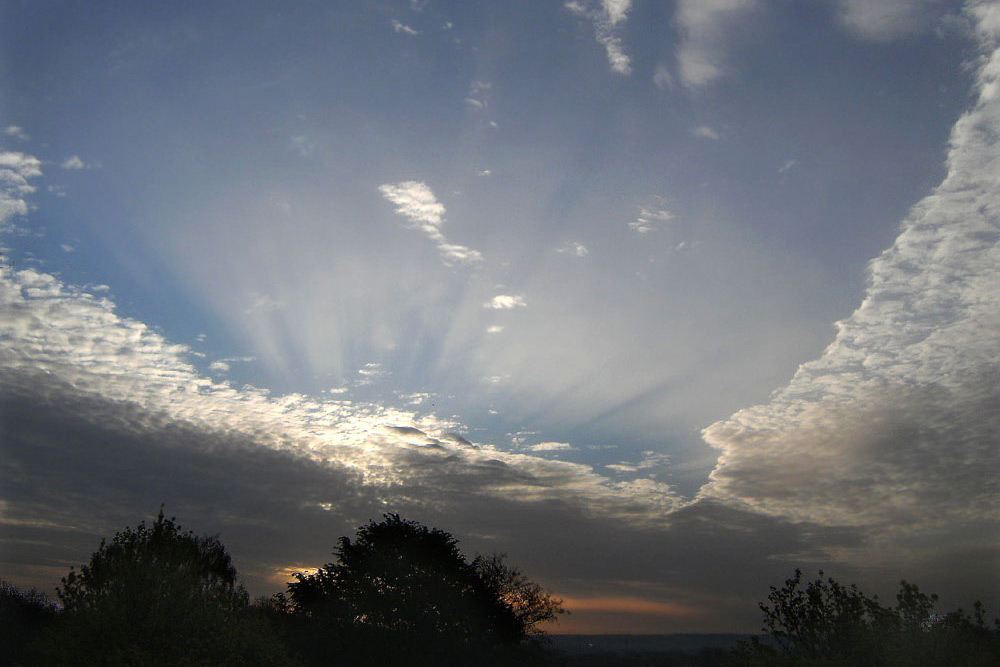Explanation
When the sun is covered by a dense cloud, dark, fan-like rays sometimes appear to emanate from the cloud. These rays are simply the shadow of the cloud. The shadow rays can only be seen if the atmosphere contains many small water droplets or dust particles. The part of the sky hit by sunlight scatters the light and thus stands out from the shadow of the cloud. All the rays seem to converge in the sun. Their fan-like spread is due to a perspective effect. In reality, all the rays are parallel. But just as railway tracks converge in the distance, so do the cloud rays converge at a point. The reverse effect occurs when the sun shines through a small gap in the clouds. A light pyramid is then created, which stands out particularly well against dark clouds. Again, the light rays are actually parallel.
If the sun is low on the horizon or has just set, the light and shadow rays can extend across the entire sky (twilight rays) and converge at the antisolar point (antisolar rays).


